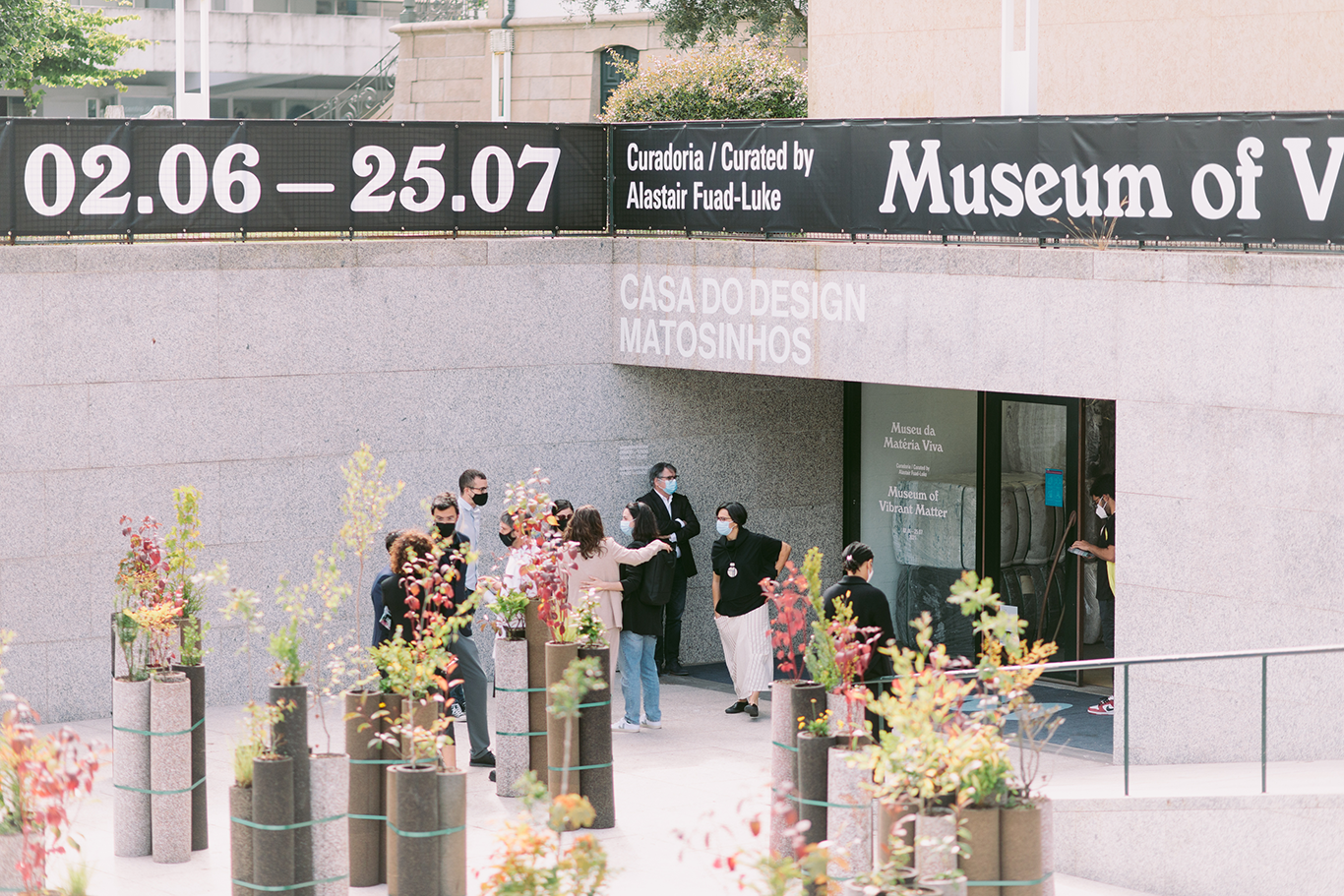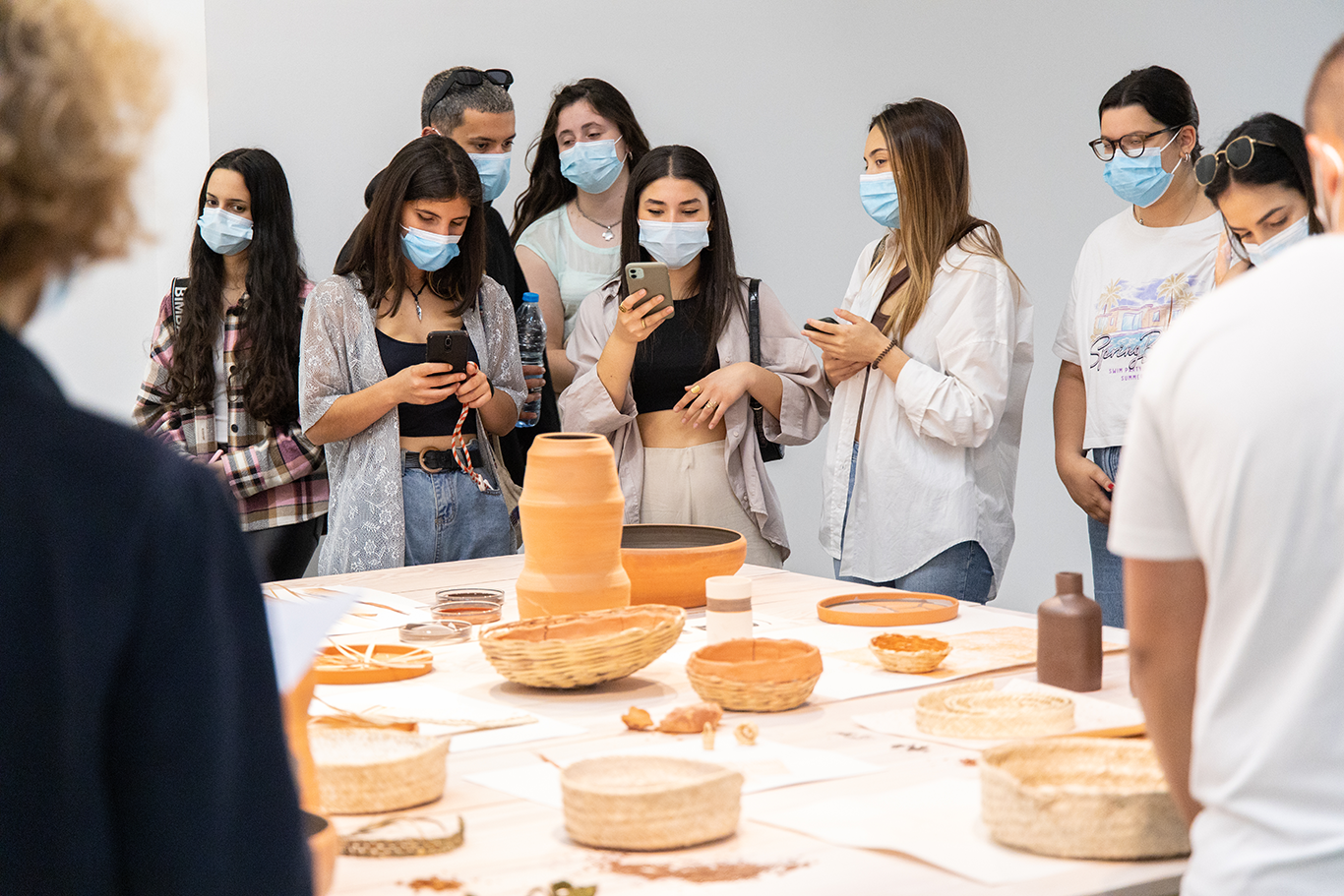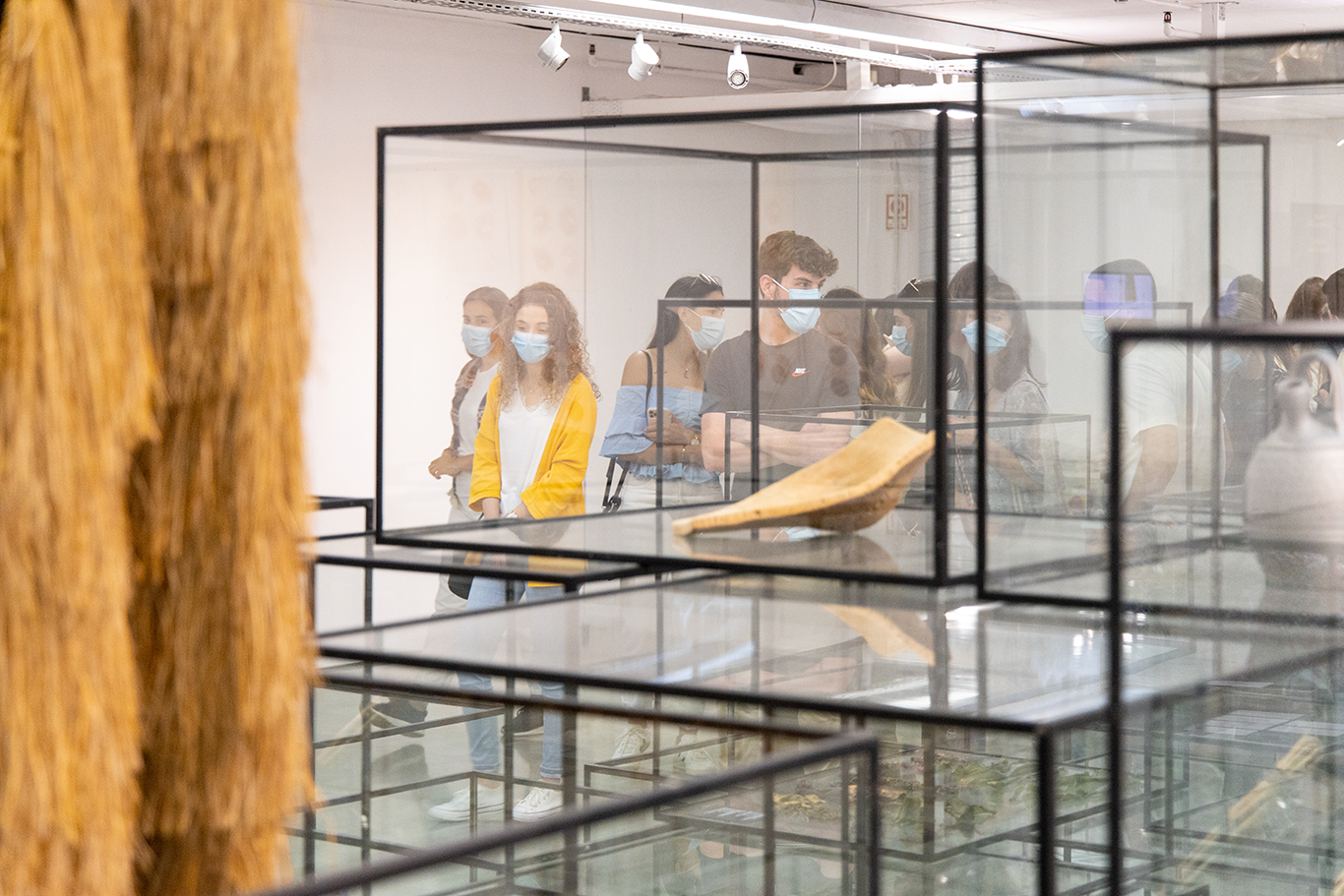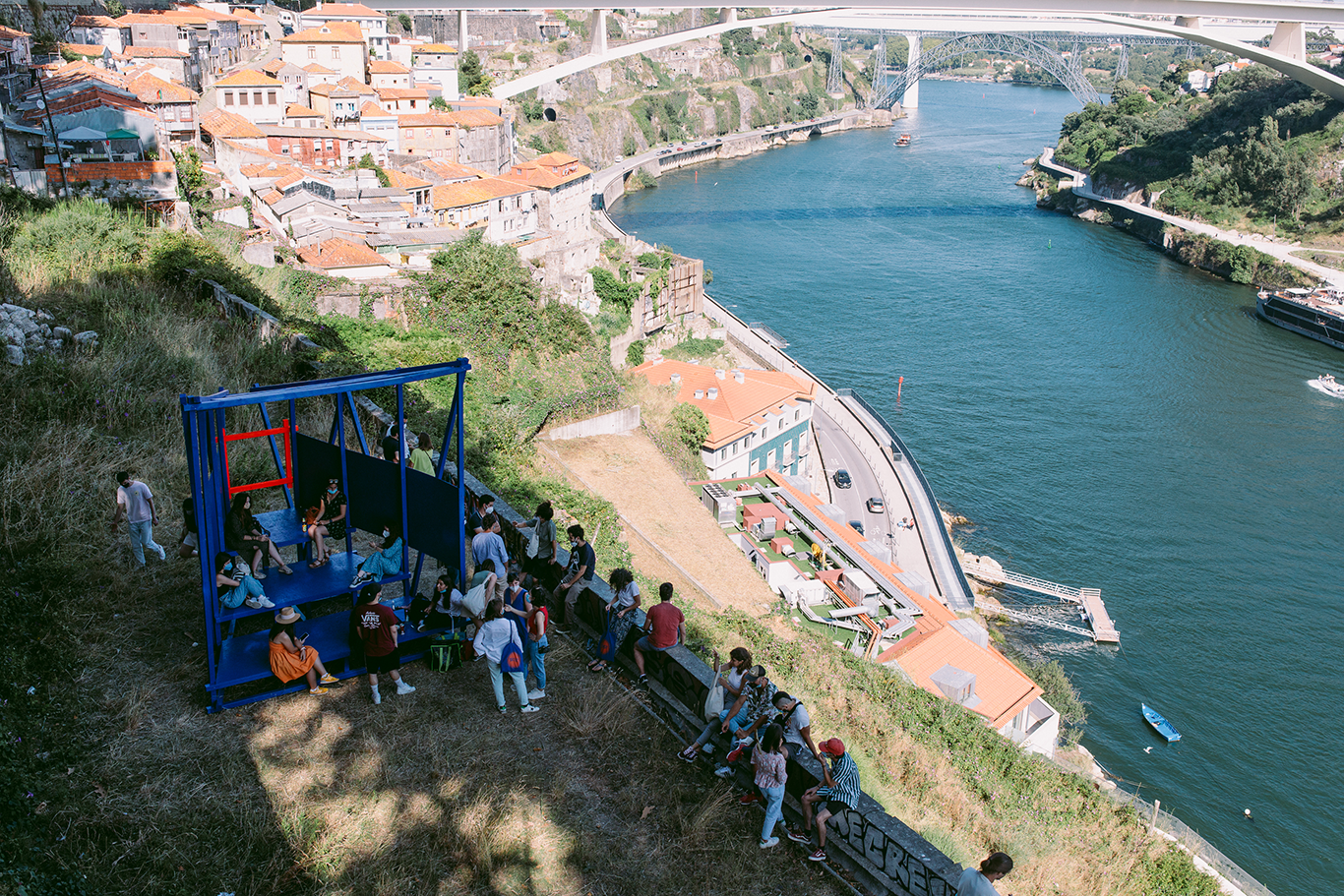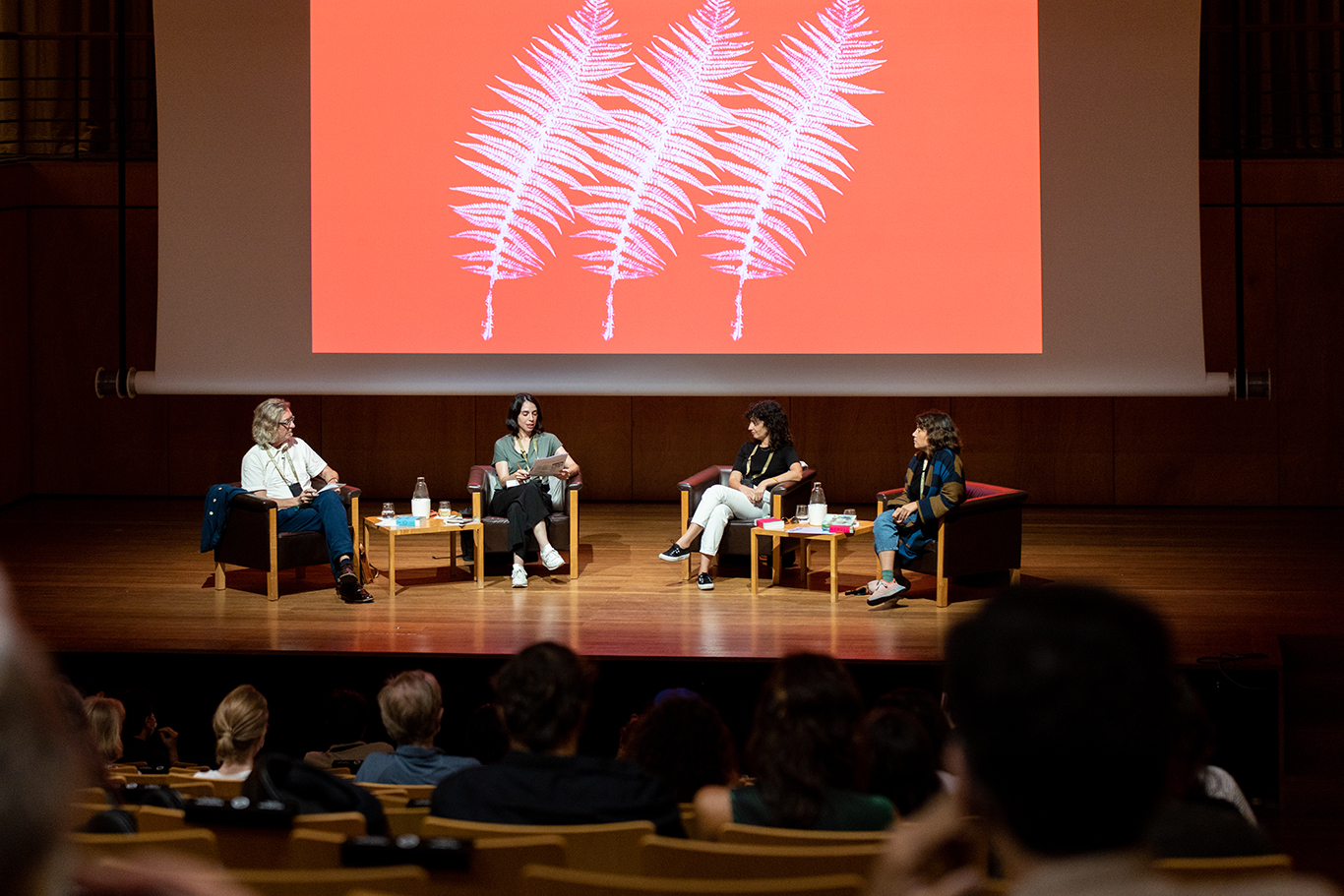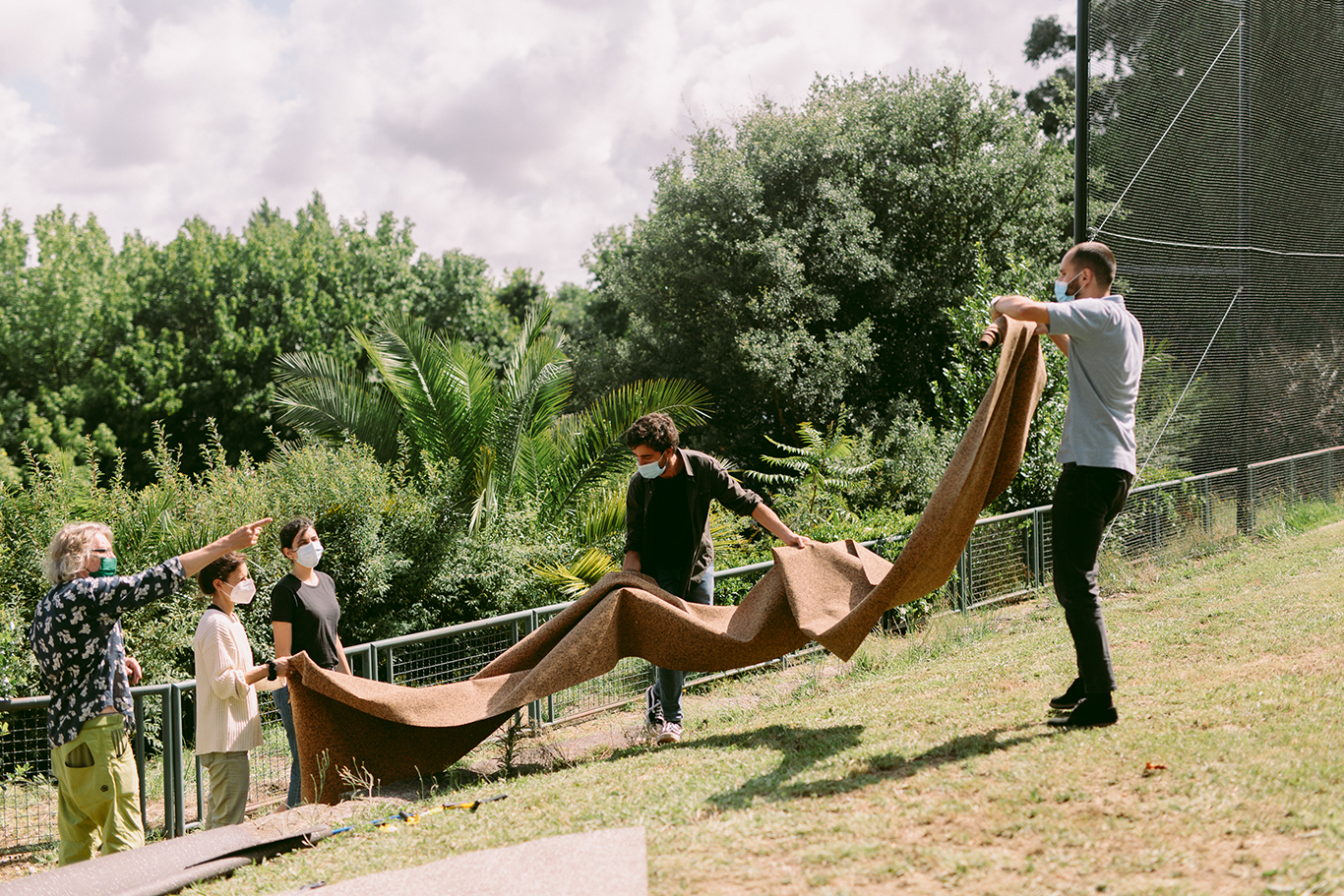Porto Design Biennale 2021
Basic information
Project Title
Full project title
Category
Project Description
Porto Design Biennale is a global gathering aimed to reflect on the role of design in the construction of more satisfying and sustainable ways of life. “Alter-Realities: Designing the Present” was the theme of the 2021 edition. During two months, designers, curators, decision makers, students and citizens got together in the cities of Porto and Matosinhos to imagine alternative spaces, different ways of production, new livelihoods and reflect on how we can materialize communities of difference.
Geographical Scope
Project Region
Urban or rural issues
Physical or other transformations
EU Programme or fund
Which funds
Description of the project
Summary
The mission of Porto Design Biennale 2021 was to experiment through materializing and prototyping, grow new social imaginaries and create pleasurable and meaningful experiences through design by encouraging participation of citizens in the construction of sustainable communities of change. The event connected curators, designers and participants from more than 15 countries to be involved in a vast range of cultural activities that took place in the cities of Porto, Matosinhos and online. Under the theme “Alter-Realities: Designing the Present”, proposed by the chief-curator Alastair Fuad-Luke, the programme was structured into four intercalated sub-themes: Alter-Scapes: How can we see and experience our cities differently? Alter-Livelihoods: Can design help us find meaningful work? Alter-Production: How might we combine local resources with open knowledge to reimagine services? and Alter-Care: How do we materialize design as care? Over the course of 54 days, a total of 7 exhibitions, 50 talks, 16 workshops and 13 interventions gathered more than 8600 visitors to reorientate ourselves towards futures where trust in each other is restored and where regeneration not destruction is evident. We highlight the “Museum of Vibrant Matter” programme, an exhibition and set of workshops drawing on cultural memories and new material experiments to re-activate our knowledge about local materials, co-constructing a living open-source digital and analogue “Archive of Vibrant Matter” with designers and citizens. Social design also marked the PDB21 event with initiatives that built bases for an alternative present punctuated by the idea of care, regeneration and change. A key feature was the project’s interdisciplinary co-curation with France, PDB21 guest country, and a partnership with Agência Galega de Inovação de Xunta de Galicia, Spain and the Didac Foundation, under the scope of the Design for Innovation and Sustainability 2024 programme - DIFERENZA, to upscale the project.
Key objectives for sustainability
With regeneration, sustainability and care as key words of the Porto Design Biennale 2021 edition, we emphasize the importance of the event programme in creating knowledge, presenting tools and promoting new practices in the design of circular communities. For the workshop Captivating the Fibresphere, led by Alexandra Fruhstorfer (Austria) and Seçil Uğur Yavuz (Italy/Turkey) in the context of the Museum of Vibrant Matter exhibition (MVM), participants gathered toxic plastic microfibers from houses and sites in the cities of Porto and Matosinhos, and learned to convert it back into matter. In the second MVM workshop “Caring through Waters” Alastair Fuad-Luke (UK/Portugal) and Tiago Patatas (Portugal) challenged the participants to question which modes of multi-species coexistence could be amplified by the transformative power of water - using cork as a conductive material. We also highlight the programme of “Exploratory with Impact - Design for the 99% habitat”, a project that emerged in the context of the PDB21 satellite activities as a response to the need to control sand extraction in Cape Verde, addressing the labour issues of local women performing this work. During four months, this system was taught and developed together with the local community, opening space for the construction of new and more sustainable autonomies. From alternatives ways of working to alternative ways of eating, “A Recoletora” integrated the Porto Design Biennale programme with the central aim of promoting edible local wild plants, introducing them into the Portuguese diet. This activity was based on the identification and mapping of wild species in a process that includes documentation, training and awareness-raising for a more seasonal, local and sustainable food consumption.
Key objectives for aesthetics and quality
As an event based on design, aesthetics are an essential part of it. Our identity, exhibitions and installations have taken into consideration the concepts of beauty as a way to experience emotion, contemplation and play. Before the beginning of PDB21, the design collective 1234 (Irina Pereira, João Castro, Miguel Almeida and Serafim Mendes) presented a visual identity of the event that was developed after winning our Open Call for Graphic Design. The selection was made by an international jury of over 150 designers, studios and design agencies from more than 43 countries. The graphic image, divided into two phases - one in black and white, prior to the launch of the programme, and another in colour, afterwards - included dynamic and interactive elements that mirror the exploratory and participatory spirit of this edition. It was also in light of this that the collective developed an instagram filter that, through augmented reality technology, allowed the placement of questions related to the theme of alter-realities in an urban context. Through its programme of exhibitions and public installations, PDB21 offered a contact with design objects and projects where people had the opportunity to contemplate, explore, reflect and learn. For instance, the “Wild Care” exhibition invited citizens to engage in a collection of stories of love by approaching matters of care in spatial practices through a display of videos, quotes and short stories. Another example is “Petites Folies”, a project that involved students in the creation of site-specific installations capable of stimulating a new look over Douro river through a series of viewpoints and framings that unveil stunning sceneries. In the digital sphere, the “Yugen app” offered cutting-edge art to fix our relationship with nature. Driven by the ideal of planetary coexistence, this satellite activity invited 36 artists to create an ever-growing collection of aesthetic pleasing exercises accessible by mobile devices.
Key objectives for inclusion
With more than 80 free admission events, inclusion was a value that was considered in our mission, recruiting, curatorship and programming. To begin with, PDB promoted an Open Call for Projects and an Open Call for Graphic Design aimed at supporting projects proposed by external design professionals and communities that then integrated the biennale’s parallel programme. Co-design was also present in several activities: “Exploratory with Impact“ created a construction system with the sand-mining women of Cape Verde, “Habitar 424” worked with and for the homeless community in Porto and “Here be Dragons” brought together a diverse group of local agents in order to put together a series of workshops and activities that seek to design urban furniture for public spaces with people with intellectual or developmental disabilities living in rural or urban peripheral zones. Throughout the event, an open questionnaire has also been made available online where Porto and Matosinhos inhabitants could share their thoughts on what could be improved in the city. The responses collected will be used as prompts to stimulate design students to imagine alternative neighborhoods. Geographic accessibility was always a cornerstone to the event. That is why in our second edition, organized in COVID times, most of our events had a digital expansion. As an example, “Peripheral Perspectives: Friday Colloquia”, the PDB21 main conference, allowed people from all over the world to engage with the speakers in a hybrid event hosted in Matosinhos but with a live stream on YouTube. Today, it is still possible to watch the talks, listen to “Voices from the Atelier”, the PDB21 podcast, or visit the dynamic collection of artifacts and transformative practices on display in the “Archive of Vibrant Matter”. In the same way that everyone was invited to participate in the Porto Design Biennale 2021, our aim is to keep the knowledge open and free for citizens, designers and curious people across borders.
Results in relation to category
Design has emerged in recent years as a key discipline for thinking about the city and building its future. This international phenomenon is particularly important in Matosinhos and Porto, two cities that have brought design practice into the center of their cultural strategy, not limiting its potential to the artistic field, but using it continuously as a catalyst for social, economic, technological, and environmental change. It is precisely in this context, and because of it, that Porto Design Biennale 2021 highlighted the specific role of designers in sustainable community building under the theme “Alter-Realities: Designing the Present”. The edition gathered around 8600 people over 54 days, an extensive programme of around 86 events (such as exhibitions, workshops, performances, installations and talks). Between June and July the Biennale has been an informal school where knowledge was exchanged and pedagogical models were tried. 40 visits were made, mostly to college students, totalling over 700 visitors. We also sought to make the Biennale a forum, expanding the field of design, mixing it with other disciplines, crossing historical knowledge with futurological views and inviting some of the most exciting names in the field of design, architecture, critical thinking, digital media, anthropology, sociology and ecology. Within this vast programme, curators, speakers and participants engaged in projects that go beyond the timeframe of the biennale. Some of these ideas are present on the Alter- journals, a collection of 5 issues with 8 guests and 22 contributors published by the PDB21 and focused on the themes of design justice, community economies, alternative forms of production, alternative scapes and design as care.
Currently we are working on the next edition of Porto Design Biennale, which will take place in 2023.
How Citizens benefit
Despite the Porto Design Biennale 2021 being organized in a pandemic context, the event had the support of both cities of Porto and Matosinhos and its formal and informal organizations and communities. The event was made in the territory and with the territory, activating a wide array of organizations: community groups, non-governmental organizations, charitable organizations, professional associations, foundations, community organizations, enhancing the crossover of resources between disciplines, designers, companies, academia, industry, various public and private social sectors, communities and families. The idea was to involve citizens and civil society as participants of the programme, but also as its creators. As Alastair Fuad-Luke, chief-curator of the PDB21, wrote in the curatorial proposal: “We aim to encourage participation of citizens, amateurs and professionals in practical, tactical and strategic alliances. Together, we can make communities of difference”. There was also a focus on the circular context of design that promoted a reflection on how we can design the present together. With the help of citizens and civil society, we were able to develop a multi-faceted programme, consisting of 7 exhibitions, 16 workshops, 13 installations and 50 talks, with a keen focus on community, circularity and inclusive design. An example is the Museum of Vibrant Matter programme that exhibited the material works of more than 25 designers and studios and invited Porto and Matosinhos citizens to contribute to the exhibition with artifacts and transforming practices from the region. The design of the MVM exhibition used recycled cork and cotton fibre from local industries which were put back into the recycling loop when the exhibition was demounted.These intertwined connections between curators, municipalities, sponsors and citizens are at the very heart of the event.
Physical or other transformations
Innovative character
There isn't at the moment another event in Portugal dedicated to design, with this scale, impact and capacity of promoting a design culture, its public discussion and the production of knowledge to a national and international level. In 2021 we felt the need to think about Alter-Realities for a rapidly changing world. The programme explored challenging new concepts intended to build a space to disturb, activate and generate difference while encouraging contestation of the status quo through inspiring modes of reorientation, action and regeneration. During the two months time of the biennale, academic concepts gained life as design solutions for new livelihoods, connecting theory and practice, academia and industry. For instance, for the “Peripheral Perspective: Friday Colloquia ''we brought together interdisciplinary academics with non-academic thinkers, designers, visual and performative artists and citizens dealing with the same issues in and through their design experimentations. The audience had the opportunity to learn about principles of interspecies media practices, inclusive design, sustainability using permaculture, design as a poetics of relating and architectures of care. Innovation in thinking went hand in hand with the use of digital platforms to democratize access to knowledge and decrease the environmental impact of the programme. Most of the talks presented during the biennale had a virtual extension or were live streamed on YouTube and Facebook with the speakers connected through ZOOM. More than 2500 people attended the talks with the possibility to ask questions, share the talk or watch it again later. We also used Instagram new features like filters, reels and stories to connect with our audience during the event. In the end, beyond the innovative character of the project, PDB21 was a celebration of design and designers, academy and industry, criticism and curatorship.
Learning transferred to other parties
Porto Design Biennale 2021 succeeded in showing design as a key disciplinary field to address contemporary global issues. Design has the capacity to approach numerous dimensions of our contemporaneity, being at the intersection of frontiers and disciplines and activating a wide variety of partnerships, promoting a dialogue between national and international cultural agents, fostering visibility of those operating in Greater Porto. Porto and Matosinhos are now new cities in their relationship with the many domains of culture and art: new spaces have been created and reclaimed, various tools of cultural policy have been implemented, and new agents, structures and relationships have emerged due to the biennale. This Biennale edition also showed the vitality of design thinking and practice, presenting the industry, education and criticism, as well as the relevance of curatorial proposals in the European context, having France as a guest country and for example with Galicia, Spain, hosting the first iteration of the Archive of Vibrant Matter, one of the axes of the PDB21 main exhibition. There was also a continued work of national and international promotion of the brand and the territory, along with an effort to strengthen partnerships and networks of support globally. Here we highlight the partnership with ico-D, International Design Council, and the hosting of the ico-D Regional Meeting Europe. The importance and results of the project has allowed other partnerships, namely the recent approval of esad–idea as a new BEDA (Bureau of European Design Associations) member and the cooperation protocol with UNITAR (The United Nations Institute for Training and Research), formalized in 2020, to ensure that our research contributes to the achievement of the United Nations Sustainable Development Goals. PDB21 experience, learning and continued achievements are translated in the third edition, which will take place in 2023.

